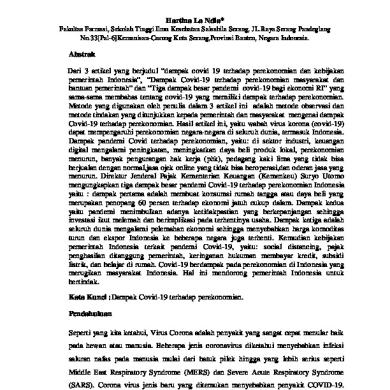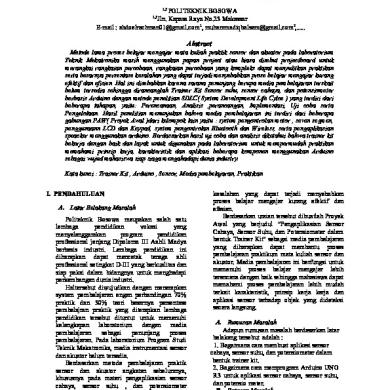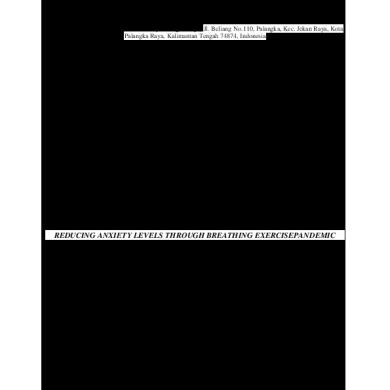* The preview only shows a few pages of manuals at random. You can get the complete content by filling out the form below.
Description
Efficacy and Tolerability of Clozapine versus Quetiapine in Treatment-resistant Schizophrenia Mitesh Kumar, B. S. Chavan, Ajeet Sidana, and Subhash Das Author information Copyright and License information Disclaimer
Abstract Objectives: To compare the efficacy and tolerability of clozapine and quetiapine in patients with treatment-resistant schizophrenia (TRS). Patients and Methods: In this prospective, randomized, open label study of 14 weeks, 53 patients with schizophrenia diagnosed as per ICD-10 and fulfilling the modified version of Conley and Kelly's criteria of TRS were randomly assigned to receive clozapine or quetiapine as per a computer-generated random table. After 2-weeks of dose-titration phase, doses were fixed at minimum therapeutic dose and subsequently adjusted according to the clinical improvement. All patients received dosage of respective drug in therapeutic range. 13 patients were lost to follow up. Treatment efficacy and side effects were evaluated with standardized rating scales. Results: Clozapine group (reduction in total score: mean=14.45, SD=10.39) had significantly greater reductions (P=0.004; CI=3.541-17.059) in the Positive and Negative Syndrome Scale (PANSS) total score, PANSS positive subscale and PANSS general psychopathology subscale at 14 weeks in comparison to the quetiapine group (reduction in total score: mean=4.15, SD=10.71). Significant reduction in PANSS negative subscale was seen with both drugs but no significant difference was present between the two drugs. At 14 weeks, 30% patients in clozapine group and 15% patients in quetiapine group showed response. Clozapine led to significantly greater side effects (P< 0.001, CI=2.241-6.059) on Glassgow Antipsychotic Side-effect Scale (GASS) than quetiapine. Conclusions: Clozapine was found to be more efficacious than quetiapine in patients with TRS but was associated with greater side effects. Both the drugs were found to be equally effective in reducing the negative symptoms. Keywords: Clozapine, quetiapine, treatment-resistant schizophrenia
INTRODUCTION Schizophrenia carries a high degree of disability, which accounts for 0.5% of the disability-adjusted life years.[1] Antipsychotic is the main-stay of treatment for people with schizophrenia, and yet approximately one-fifth to one-third of patients with this disorder are resistant to drug treatment.[2] Clozapine has been found to be effective in treatment-resistant schizophrenia (TRS)[3,4] and it was approved for TRS by the Food and Drug Administration in 1989. However, approximately 40%–70% of neurolepticresistant patients with schizophrenia are nonresponders even to clozapine.[5] Moreover, with clozapine exists a risk of agranulocytosis.[3,4] Quetiapine, with structural analogy to clozapine, but with molecular discrepancies explaining the lack of agranulocytosis risk[6] seems to be an alternative in TRS. There are a few studies showing the efficacy of quetiapine in the treatment of schizophrenia resistant to previous antipsychotics,[7] but the findings have not been replicated in other studies, and there is a dearth of such studies carried out on the Indian population. Thus to look at an alternative treatment regimen for TRS, this study was a logical outcome where the authors set out to address some unanswered queries. METHODS Patients who came to the Department of Psychiatry of Government Medical College and Hospital (GMCH), Chandigarh, India were considered for the study. They were 18–65 years, met the International Classification of Diseases, Tenth RevisionDiagnostic Criteria for Research[8] criteria for schizophrenia, gave informed consent, were accompanied by the reliable informant and were enrolled in the study from December 2013 to June 2015. For the study, modified version of Conley and Kelly's criteria[2] of TRS was used, which is defined as, “No clinical response
with two different antipsychotics used separately in the dose range of 400–600 mg of chlorpromazine per day or equivalents for 6 weeks; no period of good social or occupational functioning at least in last 1 year, and a minimum clinical global impressions (CGIs) scale rating of 4 (moderately ill); Brief Psychiatric Rating Scale (BPRS) total score >45, and a score of >4 on 2 out of 4 positive items.” Patients with a history of treatment with clozapine and/or quetiapine in the past, having seizure disorder, heart conduction defects, history of agranulocytosis or total lymphocyte count <3500/cubic mm, diabetes mellitus, neurological disorders, head injury, movement disorder, lactating or pregnant women, comorbid substance dependence except nicotine and caffeine, subnormal intelligence and late-onset schizophrenia (after 45 years) were excluded. This was a comparative, open-label, prospective interventional study. The patients were randomly assigned into two groups as: Group A (clozapine group) or Group B (quetiapine group) as per a computer-generated random table with an aim to recruit a minimum of twenty patients in each group and were followed up for 14 weeks after treatment initiation. The trial was registered with Clinical Trial Registry, India (CTRI Registration number CTRI/2016/02/006660). The principles enunciated in the Declaration of Helsinki[9] and Indian Council of Medical Research[10] was complied with and the study was approved by the ethical review committee of the institution. Intervention After recruitment, patients who were on antipsychotics were given a drugfree/washout period (1 week for oral; 1 month for long-acting depot preparation).
The patients were randomly allocated to either of the Group A or B. The dosages of the drugs were kept in the therapeutic range of 150–450 mg/day for clozapine and 400– 800 mg/day for quetiapine.[11] Clozapine was started with 25 mg/day in two divided doses and increased by 25 mg/day, whereas quetiapine was started at 50 mg/day in two divided doses and increased by 50 mg/day. The minimum therapeutic dose in all the patients was reached within 2 weeks of starting the treatment. After this, patients were continued on the same dose for 4 weeks. At the end of 4 weeks, if the improvement was not adequate (< 50% reduction in Positive and Negative Syndrome Scale [PANSS][12] score), the dose of the respective drug was further increased to the maximum permissible dose and the patients were re-assessed after 4 weeks and 8 weeks. Concomitant medications (like benzodiazepines for sleep disturbances, amitriptyline for hypersalivation, etc.) were permitted wherever required, and it was documented. Patients having serious adverse drug reaction were dropped from the study and managed as per the standard guidelines. Each patient's sociodemographic and clinical variables were recorded on prescribed Performa designed specifically for the study. Outcomes Physical examination, body weight, height, QTc interval on electrocardiogram, blood chemistry, and complete hemogram were carried out at the baseline, 2nd week and thereafter every 4th week. In addition, total leukocyte count, differential leukocyte count, platelet count, absolute neutrophil count were done on a weekly basis for patients receiving clozapine. To ensure compliance in outpatients, a family member was entrusted to supervise the intake of the drug in their presence. In addition, the empty strips of medicines were shown to doctors during follow-up visits.
Patient's clinical status was assessed with BPRS[13] and CGIs[14] at baseline and PANSS[12] at baseline, 2, 6, 10, and 14 weeks. Side effects were assessed using the Glasgow Antipsychotic Side Effect Rating Scale (GASS)[15] at baseline and thereafter at 2, 6, 10, and 14 weeks. Statistical method The statistical analysis included Chisquare test for qualitative data and ANOVA and MANOVA with repeated measures for quantitative data. T-test was applied to compare individual assessments. Data were analyzed using SPSS version 17.0 (Version 17.0, IBM) and it was represented in mean and standard deviation (SD) where data were skewed, nonparametric test (Mann– Whitney test) was used. Significance level was P < 0.05. RESULTS A total of 72 patients were screened initially, of which 19 patients were excluded due to various reasons. Remaining 53 patients were enrolled in the study. Subsequently, 13 patients dropped out of the study after the first assessment (four in Group A; nine in Group B). From among the dropouts, six patients dropped out due to the lack of efficacy (one in Group A and five in Group B), three patients dropped out due to poor compliance (one in Group A and two in Group B), two patients dropped out due to intolerability of drug (one in each group) and two patients could not be contacted (one in each group). Finally, forty patients (twenty patients in each group) completed all assessments and were included in final analysis. Comparison between clozapine (Group A) and quetiapine (Group B) group on sociodemographic and clinical variables
The patients in clozapine and quetiapine group did not differ significantly on sociodemographic variables, diagnosis, and clinical characteristics, i.e., total duration of illness, BPRS score, PANSS total scores, positive subscale scores, negative subscale scores, and general psychopathology subscale scores and CGI (severity of illness) and GASS score [Table 1].













